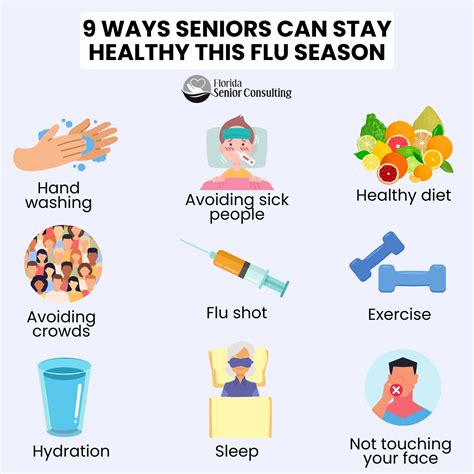The flu, or influenza, is a highly contagious respiratory illness caused by influenza viruses. It can cause mild to severe illness, and in some cases, can lead to death. As the flu season approaches, it’s essential to separate fact from fiction and understand the realities of this potentially debilitating illness. Here are 10 flu facts to help you stay healthy and informed:
1. Types of Flu Viruses
There are four main types of flu viruses: A, B, C, and D. However, only types A and B are responsible for the seasonal epidemics that occur almost every winter in the United States. Type A viruses are further divided into subtypes based on two proteins on the surface of the virus: hemagglutinin (H) and neuraminidase (N). Type C viruses cause mild infections and are not thought to cause human flu epidemics. Type D viruses primarily affect cattle and are not known to infect or cause illness in humans.
2. How Flu Spreads
The flu can spread from person to person through respiratory droplets produced when an infected person coughs, sneezes, or talks. These droplets can land in the mouths or noses of people who are nearby or possibly be inhaled into the lungs. The flu can also spread by touching a surface or object that has flu virus on it and then touching your mouth, nose, or possibly your eyes.
3. Symptoms of the Flu
Symptoms of the flu can include fever, cough, sore throat, runny or stuffy nose, muscle or body aches, headaches, fatigue, and some people may experience vomiting and diarrhea, though this is more common in children than adults. It’s crucial to understand that not everyone with the flu will have a fever.
4. High-Risk Groups
Certain people are at higher risk for serious flu complications, including older adults, young children, pregnant women, and people with certain chronic health conditions, such as heart disease, lung disease, and diabetes. These individuals should take extra precautions to avoid the flu and consider seeking medical care quickly if they develop flu symptoms.
5. Vaccination: The Best Defense
The flu vaccine is the most effective way to prevent the flu and its complications. There are different types of flu vaccines, and the Centers for Disease Control and Prevention (CDC) recommends that everyone 6 months of age and older should get a flu vaccine each year. It’s best to get vaccinated before flu viruses start to spread in your community, ideally by the end of October.
6. Evolution of Flu Viruses
Flu viruses are constantly changing, which means last year’s vaccine may not protect against this year’s viruses. The formulation of the flu vaccine is updated annually to keep up with changing flu viruses. The vaccine protects against the three or four flu viruses that research suggests will be most common during the upcoming season.
7. Antiviral Medications
If you do get the flu, antiviral drugs can be used to treat your illness. These drugs can make your illness milder and shorten the time you are sick. They may also prevent serious flu complications. For people with a high risk of flu complications, treatment with antiviral drugs can mean the difference between a mild illness and a serious one that can land them in the hospital.
8. Prevention Beyond Vaccination
While vaccination is the first line of defense against the flu, there are other preventive measures you can take. Practicing good hygiene, such as frequent handwashing with soap and water, and avoiding close contact with people who are sick can help prevent the spread of the flu. If you are sick, stay home from work or school to prevent spreading the flu to others.
9. Flu Season Timing
In the United States, flu season typically peaks between December and February, but it can vary from season to season. The exact timing and duration of flu seasons can vary, but October usually marks the beginning of the flu season, which can last as late as May.
10. Global Impact
The flu has a significant global impact. According to the World Health Organization (WHO), worldwide, these annual epidemics are estimated to result in about 3 to 5 million cases of severe illness, and about 290,000 to 650,000 respiratory deaths. In the United States alone, the CDC estimates that influenza has resulted in between 9 million and 45 million illnesses, between 140,000 and 810,000 hospitalizations, and between 12,000 and 79,000 deaths annually since 2010.
Frequently Asked Questions
What is the difference between a cold and the flu?
+While both the common cold and the flu are respiratory illnesses, they are caused by different viruses. The flu is generally worse than the common cold, and symptoms such as fever, body aches, and fatigue are more common and intense. Colds are usually milder than the flu. They often have symptoms like a runny or stuffy nose.
<div class="faq-item">
<div class="faq-question">
<h3>Can I get the flu from the flu vaccine?</h3>
<span class="faq-toggle">+</span>
</div>
<div class="faq-answer">
<p>No, flu vaccines cannot cause flu illness. Flu vaccines given as a shot are made from inactivated (killed) viruses, and therefore,cannot cause the flu. However, you might experience mild side effects like soreness, redness, or swelling where the shot was given, low-grade fever, and aches.</p>
</div>
</div>
<div class="faq-item">
<div class="faq-question">
<h3>How long does the flu last?</h3>
<span class="faq-toggle">+</span>
</div>
<div class="faq-answer">
<p>The duration of the flu can vary, but most people recover from the flu within 1 to 2 weeks. The symptoms start 1 to 4 days after infection, and they can include fever, cough, sore throat, runny or stuffy nose, muscle or body aches, headaches, and fatigue.</p>
</div>
</div>
</div>
Understanding and addressing the flu effectively requires a comprehensive approach, from vaccination and preventive measures to prompt treatment when necessary. By being informed and proactive, individuals can significantly reduce their risk of contracting the flu and contribute to a healthier community.



